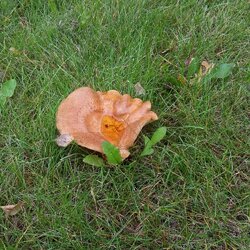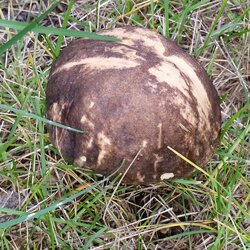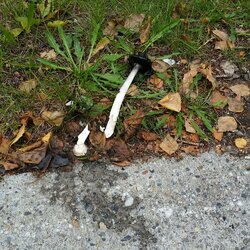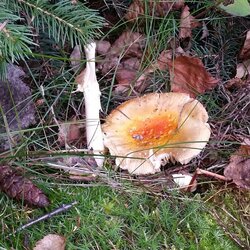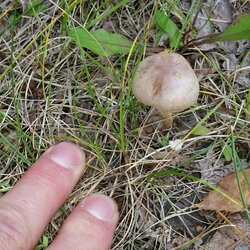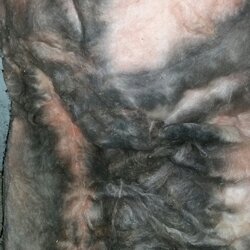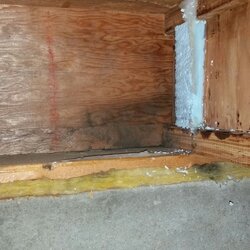This should be interesting, at least for some.
This will be, partly, a notebook or workbook for me to be keeping notes in.
The short version is the wife and I raised four kids in this five bedroom house. The kids are out, it is just us and the cat. We would like to sell and buy a smaller home on a bigger lot. We don't need five bedrooms.
Its 1200sqft lower level, 1200sqft upper level. The garage half of the ground level is on a poured pad, the rest of the lower level is over a crawlspace.
I worked the walls over top to bottom sealing up air leaks. I have a pretty tight envelope.
The wife and I pretty much live upstairs with the woodstove, so we started our pre-sale refit downstairs.
We scraped the popcorn off the ceiling. We took up the carpet. I replaced about 1/3 of the subfloor downstairs- PO used one of the bedrooms as a dog kennel.. No visible mold in the crawlspace. We sealed all the drywall with BIN primer. We painted. We put in new Marmoleum. We replaced a couple windows with new stuff from Northerm. The new windows are bigger. While the drywall had to be cut back for framing we took out the insulation in the stud spaces under the windows - it was all mildewy - sprayed the stud cavities with Concrobium, blah blah, sealed the vapor barrier back together with some incredibly expensive tape, just going nuts.
I am coming at this from the point of view that if the house doesn't sell I don't want to be re-doing any of this except maybe repainting the walls for at least 40 years.
I don't know how many dogs we have had, we still have a cat, there was a ferret for a little while, and kids by the busload. We tried to be the house our kids brought their friends to, mostly so we could keep an eye on who the kids were hanging out with. Parents of were always welcome. For a while there with all four kids home I was serving supper to 10 or 12 people 6 nights a week, but the kids turned out good.
What I am getting at is the carpet smelled pretty bad.
Now that the downstairs looks like something you might see on television, we got a faint musty odor, seasonally, when the dirt outdoors is wet.
user NateB pinted me at a very helpful video from Minnesota in the splinter thread I had going a bit ago.
Video here:
I also poked around on engineering toolbox a bit to confirm my suspicions. BRB.
This will be, partly, a notebook or workbook for me to be keeping notes in.
The short version is the wife and I raised four kids in this five bedroom house. The kids are out, it is just us and the cat. We would like to sell and buy a smaller home on a bigger lot. We don't need five bedrooms.
Its 1200sqft lower level, 1200sqft upper level. The garage half of the ground level is on a poured pad, the rest of the lower level is over a crawlspace.
I worked the walls over top to bottom sealing up air leaks. I have a pretty tight envelope.
The wife and I pretty much live upstairs with the woodstove, so we started our pre-sale refit downstairs.
We scraped the popcorn off the ceiling. We took up the carpet. I replaced about 1/3 of the subfloor downstairs- PO used one of the bedrooms as a dog kennel.. No visible mold in the crawlspace. We sealed all the drywall with BIN primer. We painted. We put in new Marmoleum. We replaced a couple windows with new stuff from Northerm. The new windows are bigger. While the drywall had to be cut back for framing we took out the insulation in the stud spaces under the windows - it was all mildewy - sprayed the stud cavities with Concrobium, blah blah, sealed the vapor barrier back together with some incredibly expensive tape, just going nuts.
I am coming at this from the point of view that if the house doesn't sell I don't want to be re-doing any of this except maybe repainting the walls for at least 40 years.
I don't know how many dogs we have had, we still have a cat, there was a ferret for a little while, and kids by the busload. We tried to be the house our kids brought their friends to, mostly so we could keep an eye on who the kids were hanging out with. Parents of were always welcome. For a while there with all four kids home I was serving supper to 10 or 12 people 6 nights a week, but the kids turned out good.
What I am getting at is the carpet smelled pretty bad.
Now that the downstairs looks like something you might see on television, we got a faint musty odor, seasonally, when the dirt outdoors is wet.
user NateB pinted me at a very helpful video from Minnesota in the splinter thread I had going a bit ago.
Video here:
I also poked around on engineering toolbox a bit to confirm my suspicions. BRB.


